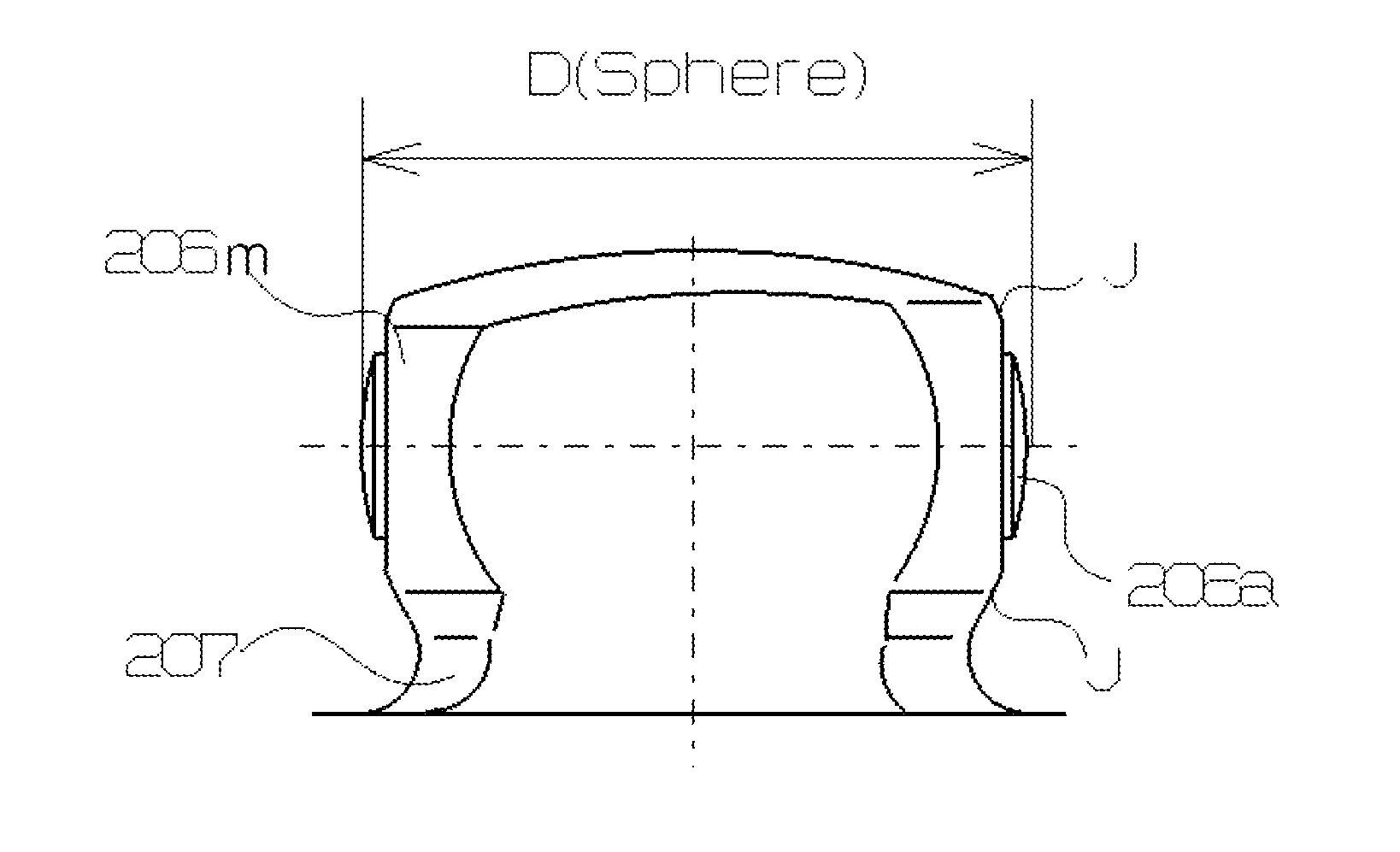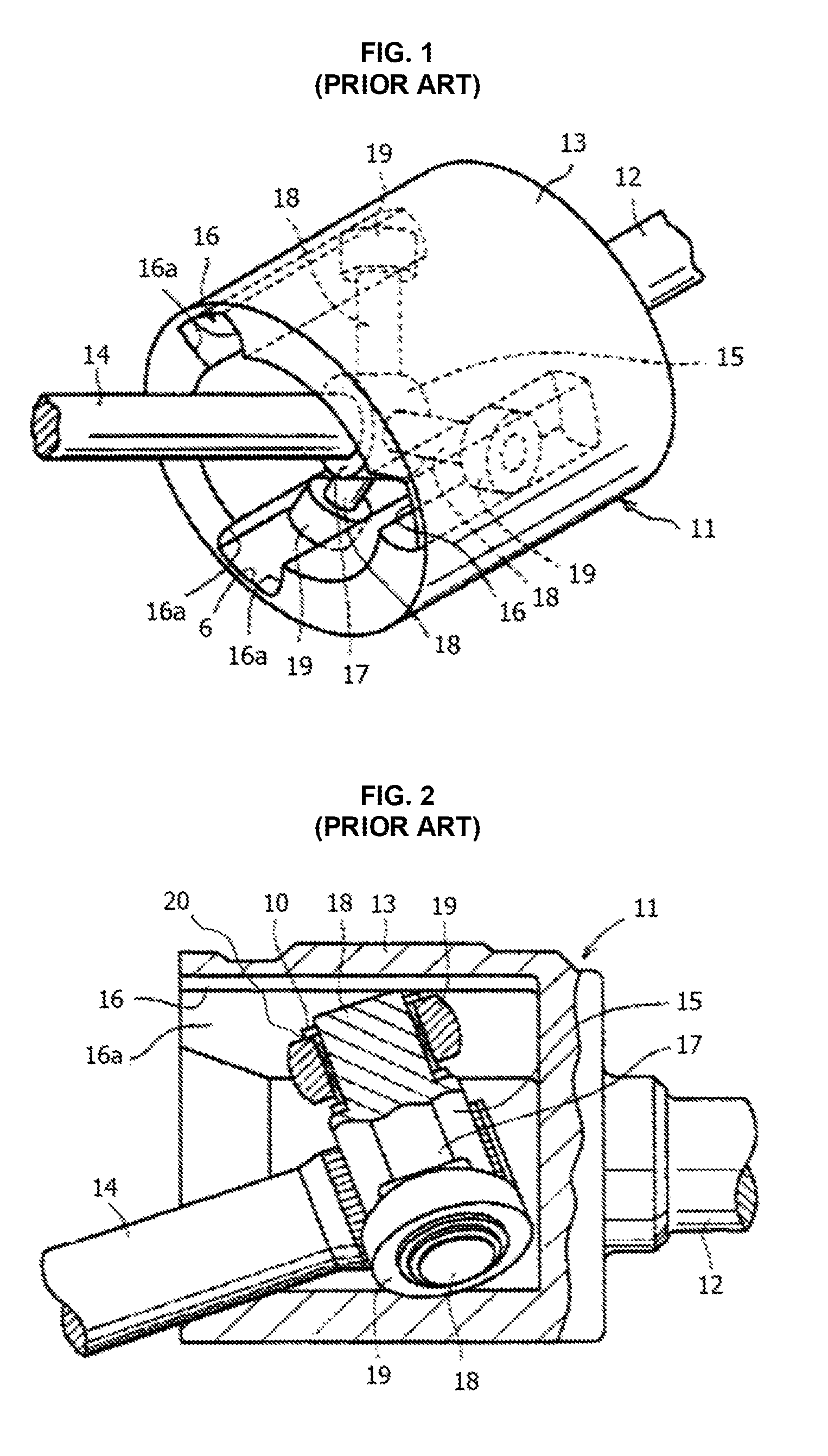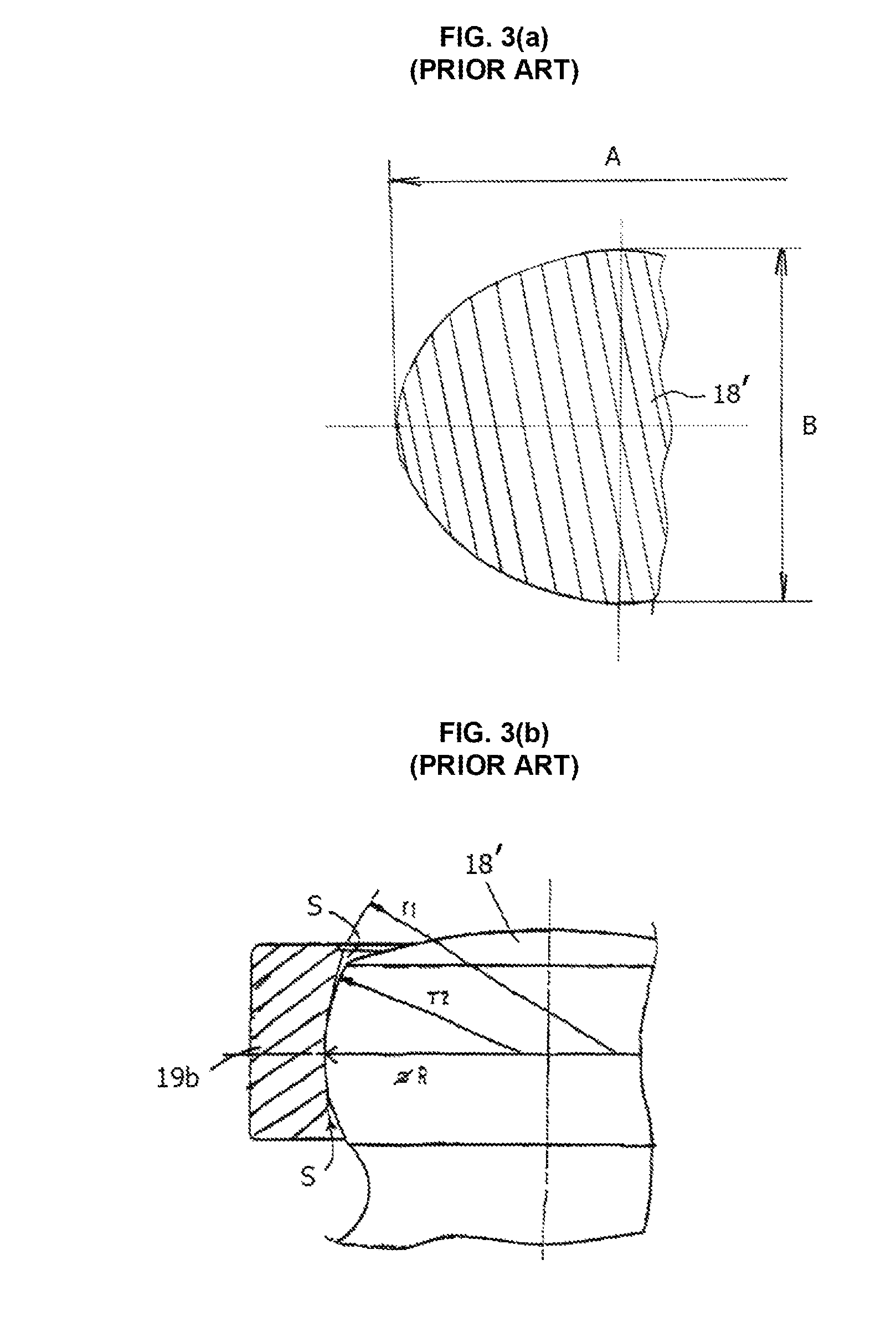Constant velocity joint of tripod type
a constant velocity joint and tripod technology, applied in the direction of mechanical equipment, manufacturing tools, couplings, etc., can solve the problems of large friction between the faces, difficult roller assembly b, uneven rolling, etc., to achieve reliable structure, durable structure and mechanical strength, and easy assembly
- Summary
- Abstract
- Description
- Claims
- Application Information
AI Technical Summary
Benefits of technology
Problems solved by technology
Method used
Image
Examples
Embodiment Construction
[0087]With reference to FIGS. 5-18 of the drawings, exemplary embodiments of the tripods of the tripod type constant velocity joints of the present invention and methods of assembling the joints are described herein below. The tripods, trunnions, and inner rollers illustrated and described in this application are intended to be constructed and used in association with the constant velocity joints and associated members thereof as described in the above-identified applicant's prior application Ser. No. 11 / 750,138 (now U.S. Pat. No. 7,819,752) and Ser. No. 11 / 840,194 (now U.S. Pat. No. 7,878,914), the entire content of which are incorporated herein by reference. Accordingly, detailed descriptions thereof are not repeated herein for simplicity purposes. In addition, it is further noted that the same or similar elements are referred in the accompanied drawings with the same or similar reference characters for simplicity purposes.
[0088]FIG. 5 illustrates the tripod for a constant velocit...
PUM
 Login to View More
Login to View More Abstract
Description
Claims
Application Information
 Login to View More
Login to View More - R&D
- Intellectual Property
- Life Sciences
- Materials
- Tech Scout
- Unparalleled Data Quality
- Higher Quality Content
- 60% Fewer Hallucinations
Browse by: Latest US Patents, China's latest patents, Technical Efficacy Thesaurus, Application Domain, Technology Topic, Popular Technical Reports.
© 2025 PatSnap. All rights reserved.Legal|Privacy policy|Modern Slavery Act Transparency Statement|Sitemap|About US| Contact US: help@patsnap.com



